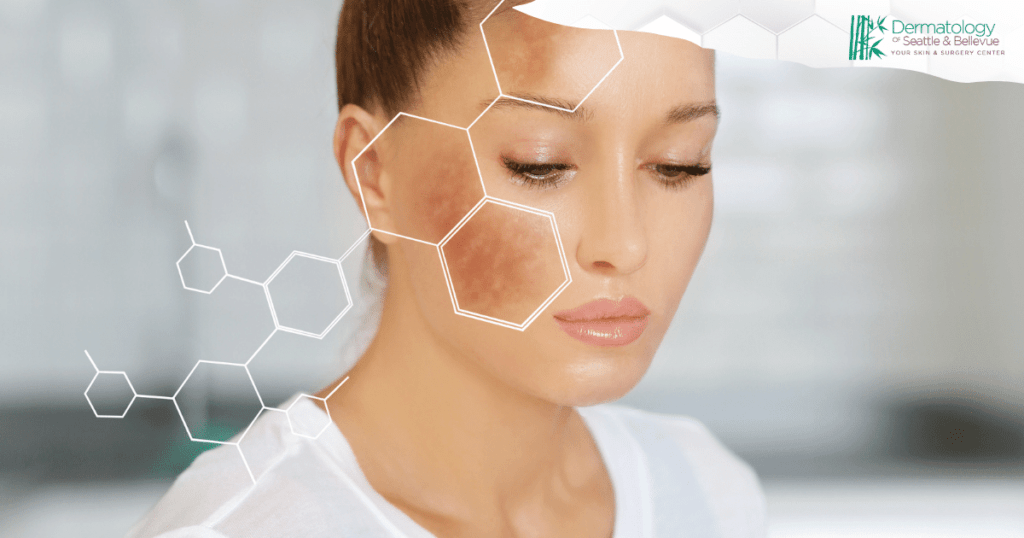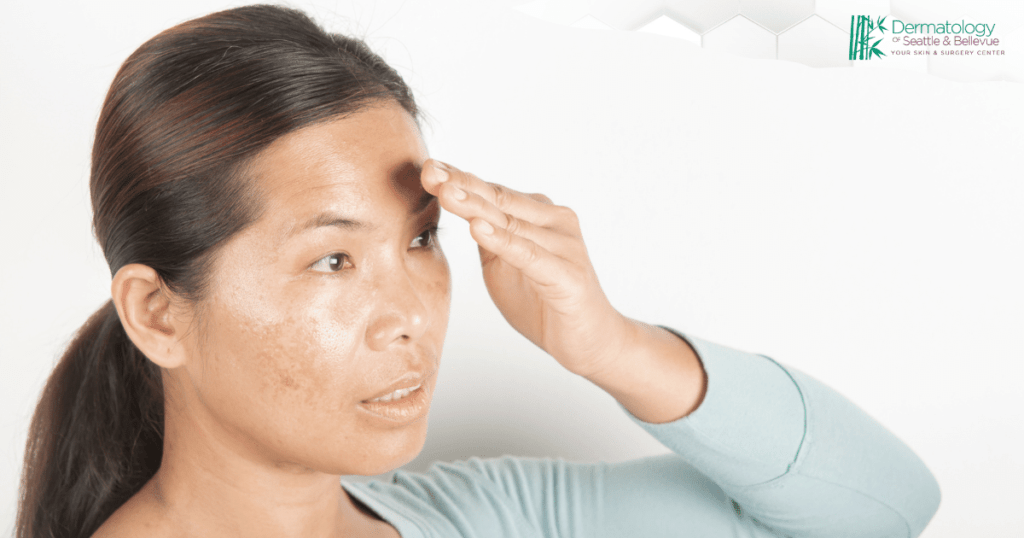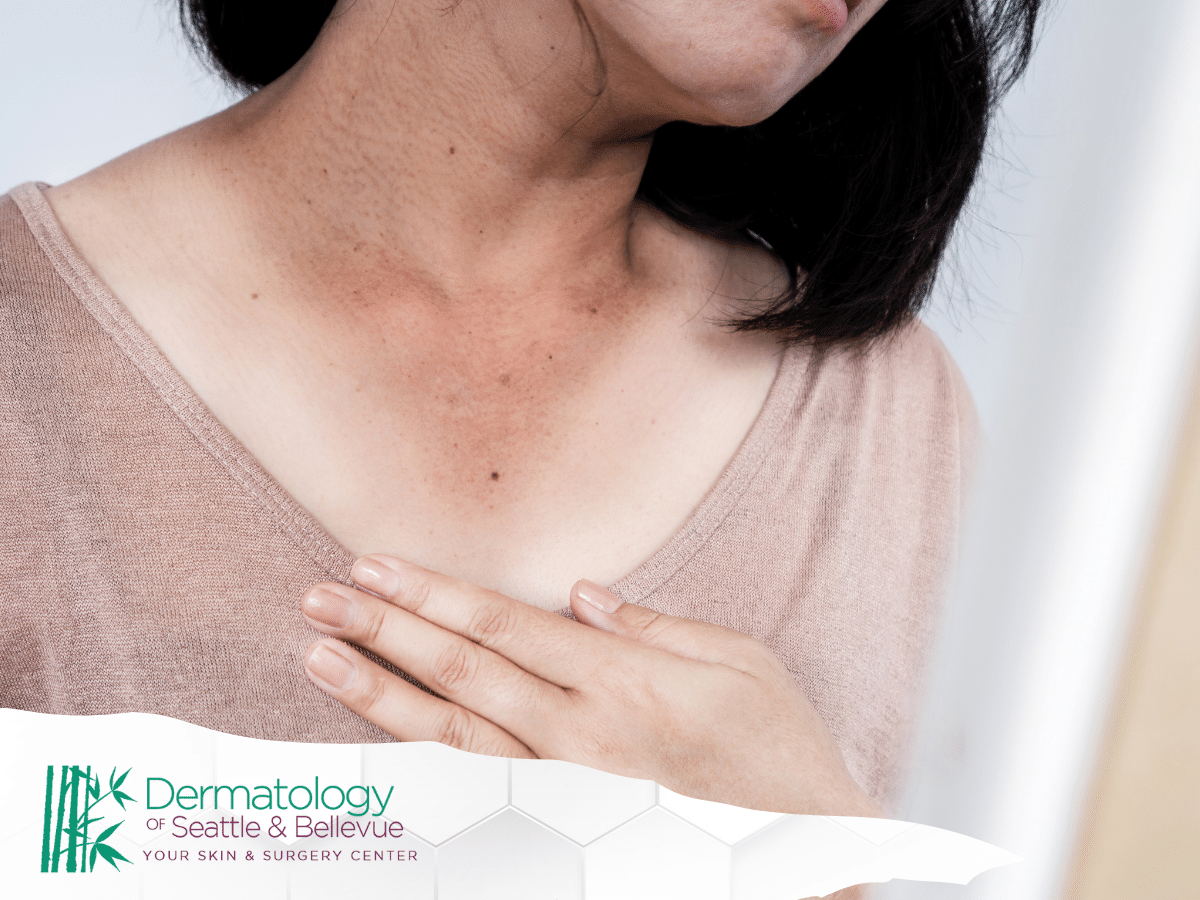Regarding skin health, distinguishing between sun spots and melanoma is crucial. Both can show up as dark spots on your skin, but their implications are vastly different. This article will break down the differences, risk factors, and the importance of catching them early.
Understanding Sun Spots

Sun spots, also called liver spots or age spots, are flat, brown spots that usually appear on parts of your skin that get a lot of sun. They are generally harmless and result from prolonged sun exposure. UV rays from the sun or tanning beds cause these pigment-producing cells to darken over time, leading to sunspots.
Typically, sun spots develop on areas like the face, hands, shoulders, and arms—anywhere frequently exposed to the sun.
One of the main reasons people worry about sun spots is cosmetic. These spots can make your skin look older, and while they are usually harmless, their appearance can still be concerning.
They are typically round or oval, have well-defined borders, and range in color from light brown to dark brown. Over time, as you spend more time in the sun without protection, these spots can become more numerous and darker.
What is Melanoma?
Melanoma is a serious type of skin cancer that starts in the pigment-producing cells called melanocytes. Unlike sun spots, melanoma can be life-threatening if not caught early. Melanomas often look like dark spots with irregular borders and can change in size, color, and shape.
People with fair skin, a family history of skin cancer, or a history of serious sunburns are at higher risk. Melanoma can develop anywhere on your body, but it is more likely to start in sun-exposed areas.
One of the key signs of melanoma is a spot that looks different from all the other spots on your skin. This is sometimes referred to as the “ugly duckling” sign. Melanomas can be black, brown, pink, red, purple, blue, or white.
They might start as a flat spot but can become raised over time. Another important sign is that a mole or spot that looks different from others should be evaluated by a dermatologist.
Key Differences Between Sun Spots and Melanoma
It is essential to recognize the differences between sun spots and melanoma. Sun spots are usually harmless, with consistent color and smooth borders. In contrast, melanomas often have irregular borders and uneven color and may change over time.
One helpful way to tell the difference is the ABCDE rule:
- Asymmetry: One half of the mole doesn’t match the other half.
- Border: Edges are irregular, ragged, notched, or blurred.
- Color: The color is not uniform and may include shades of brown or black, sometimes with patches of pink, red, white, or blue.
- Diameter: Melanomas are usually larger than the size of a pencil eraser (about 1/4 inch or 6mm).
- Evolving: The mole is changing in size, shape, or color.
These differences highlight why it’s crucial to monitor your skin regularly and consult a dermatologist if you notice any changes.
Skin Cancer and Sun Exposure

Types of Skin Cancers
Skin cancer comes in several forms, including basal cell carcinoma, squamous cell carcinoma, and melanoma.
- Basal cell carcinoma is the most common type and is often found in areas exposed to the sun, like the face and neck. It rarely spreads but can cause significant damage if not treated.
- Squamous cell carcinoma also commonly appears in sun-exposed areas and can spread if not treated.
- Melanoma, while less common, is the most dangerous type of skin cancer due to its ability to spread to other parts of the body.
Risk Factors for Skin Cancer
Long-term sun exposure significantly increases the risk of developing skin cancer. UV rays from the sun and tanning beds are major contributors.
Fair skin, a family history of skin cancer, and a personal history of severe sunburns also raise the risk. People with lighter skin have less melanin, the pigment that helps protect against UV radiation, making them more susceptible to sun damage and skin cancer.
Other risk factors include:
- Geographic location: Living closer to the equator where the sun’s rays are stronger.
- Altitude: Higher altitudes receive more UV radiation.
- Moles: Having many moles or atypical moles increases the risk of melanoma.
- Immune suppression: People with weakened immune systems, such as those who have had organ transplants, are at higher risk.
- Exposure to certain substances: Contact with substances like arsenic can increase the risk of skin cancer.
Early Signs Detection and Prevention
Early Warning Signs of Skin Cancer
Watch for early warning signs like changes in the size, shape, or color of moles or spots. Look for spots with irregular borders, uneven coloring, or changes in texture. Comparing one half of a spot to the other half can help spot irregularities.
If you notice changes, seek professional advice immediately. Melanoma can develop suddenly, and existing moles can become cancerous, so monitoring any changes closely is important.
In addition to the ABCDE rule, other warning signs include:
- A sore that doesn’t heal.
- Spread of pigment from the border of a spot into the surrounding skin.
- Redness or a new swelling beyond the border.
- Change in sensation, such as itchiness, tenderness, or pain.
- Change in the surface of a mole, including oozing, bleeding, or the appearance of a lump or bump.
Preventing Skin Cancer
To prevent skin cancer, reduce sun exposure and protect your skin. Use sunscreen with high SPF, wear protective clothing, and avoid tanning beds.
Other prevention tips include:
- Apply sunscreen generously: Use about an ounce (a shot glass full) to cover all exposed skin. Reapply every two hours or more often if swimming or sweating.
- Wear UPF clothing: Clothing with an ultraviolet protection factor (UPF) can provide additional protection.
- Avoid the sun during peak hours: The sun’s rays are strongest between 10 a.m. and 4 p.m.
- Stay in the shade: When outdoors, seek shade under umbrellas, trees, or shelters.
- Avoid indoor tanning: Tanning beds expose you to intense UV radiation and increase the risk of all types of skin cancer.
Regular Self-Checks
Regular self-checks are vital for the early detection of skin cancer. Examine your skin monthly, looking for new or changing spots. Focus on areas of the skin frequently exposed to the sun, like the face, neck, arms, and legs. Early detection improves treatment outcomes significantly.
Here’s how to perform a self-check:
- Use a full-length mirror and a hand mirror: Check your entire body, including hard-to-see areas of the skin like your back, scalp, and between your toes.
- Examine your moles and spots for any changes in size, shape, color, or texture.
- Check all areas: Don’t forget less obvious areas such as your scalp, the soles of your feet, and under your nails.
- Track changes: Record your moles and spots, noting any changes over time. You can even take photos to help monitor them.
Conclusion
Knowing the differences between sun spots and melanoma is vital for keeping your skin healthy. Sunspots are generally harmless, but melanoma can be life-threatening. Early detection and prevention are key to reducing the risk of skin cancer. Self-checks, professional skin exams, and skin protection from UV exposure will help maintain your skin’s health and skin cancer prevention.
Final Thoughts
This blog is intended for informational purposes only and should not be used as a substitute for professional medical advice, diagnosis, or treatment. For accurate and personalized information regarding your skin health, scheduling an appointment with a qualified dermatologist is essential.






